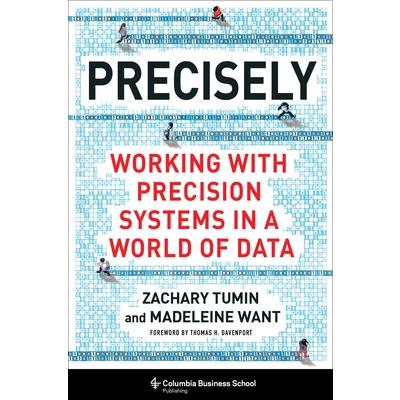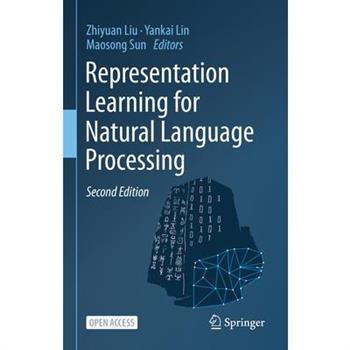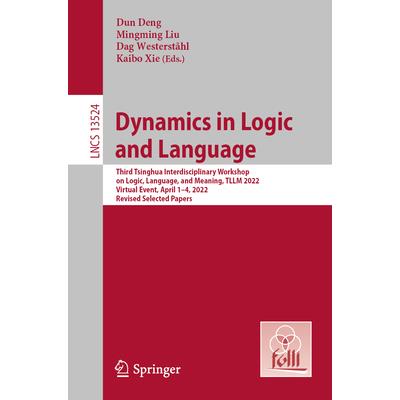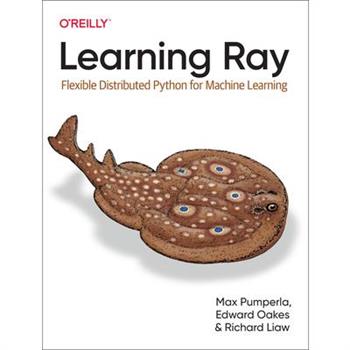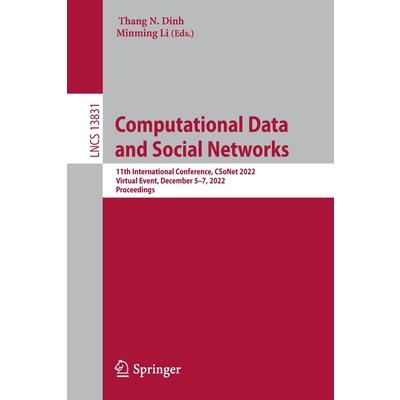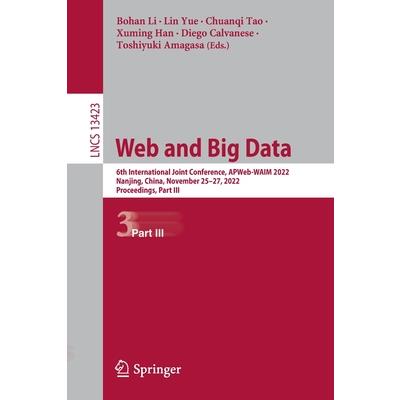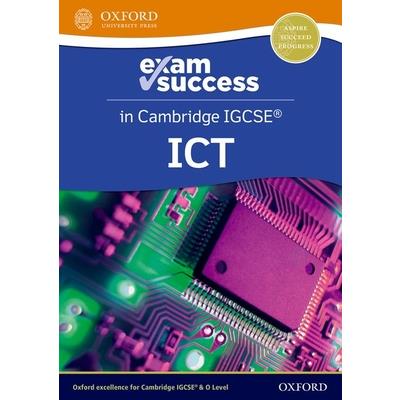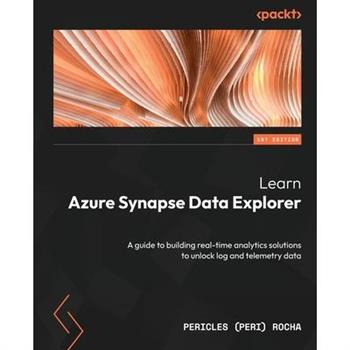Navigating Big Data Analytics
More organizations and their leaders are looking to big data to transform processes and elevate the quality of products and services. Yet, gathering and storing large amounts of data isn't the quick fix often sought after. Without analysts-the human component-to interpret that data, the cost of incorrect or misinterpreted data can greatly impact organizations. In this book, William Mawby examines the claims of big data analysis in detail. Using examples to illustrate potential problems that may lead to inefficient and inaccurate results, Mawby helps practitioners avoid potential pitfalls and offers application methods to incorporate big data analytics into your company that will enhance your analytic efforts. William D. Mawby, Ph.D. has extensive consulting, teaching, and project experience and has taught more than 200 courses on many subjects in statistics and mathematics. He is currently writing, teaching courses on climate change and big data, and volunteering at the American Association for the Advancement of Science and the Union of Concerned Scientists.
Advanced Hybrid Information Processing
This two-volume set constitutes the post-conference proceedings of the 6th EAI International Conference on Advanced Hybrid Information Processing, ADHIP 2022, held in Changsha, China, in September 29-30, 2022. The 109 full papers presented were selected from 276 submissions and focus on theory and application of hybrid information processing technology for smarter and more effective research and application. The theme of ADHIP 2022 was Hybrid Information Processing in Meta World. The papers are named in topical sections as follows: Information Extracting and Processing in Digital World; Education Based methods in Learning and Teaching; Various Systems for Digital World.
Advanced Hybrid Information Processing
This two-volume set constitutes the post-conference proceedings of the 6th EAI International Conference on Advanced Hybrid Information Processing, ADHIP 2022, held in Changsha, China, in September 29-30, 2022. The 109 full papers presented were selected from 276 submissions and focus on theory and application of hybrid information processing technology for smarter and more effective research and application. The theme of ADHIP 2022 was Hybrid Information Processing in Meta World. The papers are named in topical sections as follows: Information Extracting and Processing in Digital World; Education Based methods in Learning and Teaching; Various Systems for Digital World.
Information Technology in Disaster Risk Reduction
This volume constitutes the refereed and revised post-conference proceedings of the 6th IFIP WG 5.15 International Conference on Information Technology in Disaster Risk Reduction, ITDRR 2021, in Morioka, Japan, in October 2021. The 11 full papers presented were carefully reviewed and selected from 18 submissions. The papers focus on various aspects and challenges of coping with disaster risk reduction. The papers are categorized in the following topical subheadings: Information Analysis for Situation Awareness; Evacuation and Rescue; COVID-19 Issues; and IT Use for Risk and Disaster Management.
Introduction to Systems Biology
This book is an introduction to the language of systems biology, which is spoken among many disciplines, from biology to engineering. Authors Thomas Sauter and Marco Albrecht draw on a multidisciplinary background and evidence-based learning to facilitate the understanding of biochemical networks, metabolic modeling and system dynamics.Their pedagogic approach briefly highlights core ideas of concepts in a broader interdisciplinary framework to guide a more effective deep dive thereafter. The learning journey starts with the purity of mathematical concepts, reveals its power to connect biological entities in structure and time, and finally introduces physics concepts to tightly align abstraction with reality.This workbook is all about self-paced learning, supports the flipped-classroom concept, and kick-starts with scientific evidence on studying. Each chapter comes with links to external YouTube videos, learning checklists, and Integrated real-world examples to gain confidence in thinking across scientific perspectives. The result is an integrated approach that opens a line of communication between theory and application, enabling readers to actively learn as they read.This overview of capturing and analyzing the behavior of biological systems will interest adherers of systems biology and network analysis, as well as related fields such as bioinformatics, biology, cybernetics, and data science.
Big Data Analytics in Astronomy, Science, and Engineering
This book constitutes the proceedings of the 10th International Conference on Big Data Analytics, BDA 2022, which took place in a hybrid mode during December 2022 in Aizu, Japan.The 14 full papers included in this volume were carefully reviewed and selected from 70 submissions. They were organized in topical sections as follows: big data analytics, networking, social media, search, information extraction, image processing and analysis, spatial, text, mobile and graph data analysis, machine learning, and healthcare.
Introduction to Systems Biology
This book is an introduction to the language of systems biology, which is spoken among many disciplines, from biology to engineering. Authors Thomas Sauter and Marco Albrecht draw on a multidisciplinary background and evidence-based learning to facilitate the understanding of biochemical networks, metabolic modeling and system dynamics.Their pedagogic approach briefly highlights core ideas of concepts in a broader interdisciplinary framework to guide a more effective deep dive thereafter. The learning journey starts with the purity of mathematical concepts, reveals its power to connect biological entities in structure and time, and finally introduces physics concepts to tightly align abstraction with reality.This workbook is all about self-paced learning, supports the flipped-classroom concept, and kick-starts with scientific evidence on studying. Each chapter comes with links to external YouTube videos, learning checklists, and Integrated real-world examples to gain confidence in thinking across scientific perspectives. The result is an integrated approach that opens a line of communication between theory and application, enabling readers to actively learn as they read.This overview of capturing and analyzing the behavior of biological systems will interest adherers of systems biology and network analysis, as well as related fields such as bioinformatics, biology, cybernetics, and data science.
Artificial Intelligence: Theories and Applications
This volume constitutes selected papers presented at the First International Conference on Artificial Intelligence: Theories and Applications, ICAITA 2022, held in Mascara, Algeria, in November 2022. The 23 papers were thoroughly reviewed and selected from the 66 qualified submissions. They are organized in topical sections on ​artificial vision; and articial intelligence in big data and natural language processing.
Machine Learning and Knowledge Discovery in Databases
The multi-volume set LNAI 13713 until 13718 constitutes the refereed proceedings of the European Conference on Machine Learning and Knowledge Discovery in Databases, ECML PKDD 2022, which took place in Grenoble, France, in September 2022.The 236 full papers presented in these proceedings were carefully reviewed and selected from a total of 1060 submissions. In addition, the proceedings include 17 Demo Track contributions. The volumes are organized in topical sections as follows: Part I: Clustering and dimensionality reduction; anomaly detection; interpretability and explainability; ranking and recommender systems; transfer and multitask learning; Part II: Networks and graphs; knowledge graphs; social network analysis; graph neural networks; natural language processing and text mining; conversational systems; Part III: Deep learning; robust and adversarial machine learning; generative models; computer vision; meta-learning, neural architecture search; Part IV: Reinforcement learning; multi-agent reinforcement learning; bandits and online learning; active and semi-supervised learning; private and federated learning; . Part V: Supervised learning; probabilistic inference; optimal transport; optimization; quantum, hardware; sustainability; Part VI: Time series; financial machine learning; applications; applications: transportation; demo track.
Precisely
Bronze Medal Winner, 2024 Axiom Business Book Award, Emerging Trends / AI If you want to win an election, improve the health of a city, or thrill your customers, you're going to need precision systems--the highly engineered working arrangements of teams, processes, and technologies that put data and AI to work creating the change that leaders want, exactly how they want it. Big Tech firms like Amazon, Google, Apple, and Facebook have mastered their own precision systems, building trillion-dollar businesses using data-driven tools from mass-market "nudges" to industrial-grade recommendation systems. Precisely is the playbook for the rest of us. Zachary Tumin and Madeleine Want show how leaders in every domain are taking real-time precision systems into the marketplace, the political race, and the fight for health--from New York-Presbyterian Hospital to the New York Times, the NFL's Baltimore Ravens to BNSF Railroad, the Biden-Harris campaign to the NYPD--to reveal elusive patterns, perform a repetitive task, run a play, or tailor a message, one at a time or by the millions. Precisely provides insight that will help leaders choose the system that's right for them, decide which problem to tackle first, sell the importance of precision to stakeholders, power-up the people and the technology, and accomplish change that delivers precisely what's needed every time--and do it all responsibly.
Snowpro(tm) Core Certification Companion
This study companion helps you prepare for the SnowPro Core Certification exam. The author guides your studies so you will not have to tackle the exam by yourself. To help you track your progress, chapters in this book correspond to the exam domains as described on Snowflake's website. Upon studying the material in this book, you will have solid knowledge that should give you the best shot possible at taking and passing the exam and earning the certification you deserve. Each chapter provides explanations, instructions, guidance, tips, and other information with the level of detail that you need to prepare for the exam. You will not waste your time with unneeded detail and advanced content which is out of scope of the exam. Focus is kept on reviewing the materials and helping you become familiar with the content of the exam that is recommended by Snowflake.This Book Helps YouReview the domainsthat Snowflake specifically recommends you study in preparation for Exam COF-C02Identify gaps in your knowledge that you can study and fill in to increase your chances of passing Exam COF-C02Level up your knowledge even if not taking the exam, so you know the same material as someone who has taken the examLearn how to set up a Snowflake account and configure access according to recommended security best practicesBe capable of loading structured and unstructured data into Snowflake as well as unloading data from SnowflakeUnderstand how to apply Snowflake data protection features such as cloning, time travel, and fail safeReview Snowflake's data sharing capabilities, including data marketplace and data exchangeWho This Book Is ForThose who are planning to take the SnowPro Core Certification COF-C02 exam, and anyone who wishes to gain core expertise in implementing and migrating tothe Snowflake Data Cloud
Intelligent Transport Systems
This book constitutes the proceedings of the 6th International Conference on Intelligent Transport Systems, INTSYS 2022, which was held in Lisbon, Portugal, in December 15-16, 2022. With the globalization of trade and transportation and the consequent multi-modal solutions used, additional challenges are faced by organizations and countries. Intelligent Transport Systems make transport safer, more efficient, and more sustainable by applying information and communication technologies to all transportation modes.The 15 revised full papers in this book were selected from 45 submissions and are organized in three thematic sessions on smart city; transportation modes and AI; intelligent transportation and electric vehicles.
Information for a Better World: Normality, Virtuality, Physicality, Inclusivity
This two-volume set LNCS 13971 + 13972 constitutes the refereed proceedings of the 18th International Conference on Information for a Better World: Normality, Virtuality, Physicality, Inclusivity, held in March 2023.The 36 full papers and the 46 short papers presented in these proceedings were carefully reviewed and selected from 197 submissions. They cover topics such as: Archives and Records, Behavioral Research, Information Governance and Ethics, AI and Machine Learning, Data Science, Information and Digital literacy, Cultural Perspectives, Knowledge Management and Intellectual Capital, Social Media and Digital Networks, Libraries, Human-Computer Interaction and Technology, Information Retrieval, Community Informatics, and Digital Information Infrastructure.
Information for a Better World: Normality, Virtuality, Physicality, Inclusivity
This two-volume set LNCS 13971 + 13972 constitutes the refereed proceedings of the 18th International Conference on Information for a Better World: Normality, Virtuality, Physicality, Inclusivity, held in March 2023.The 36 full papers and the 46 short papers presented in these proceedings were carefully reviewed and selected from 197 submissions. They cover topics such as: Archives and Records, Behavioral Research, Information Governance and Ethics, AI and Machine Learning, Data Science, Information and Digital literacy, Cultural Perspectives, Knowledge Management and Intellectual Capital, Social Media and Digital Networks, Libraries, Human-Computer Interaction and Technology, Information Retrieval, Community Informatics, and Digital Information Infrastructure.
Machine Learning, Optimization, and Data Science
This two-volume set, LNCS 13810 and 13811, constitutes the refereed proceedings of the 8th International Conference on Machine Learning, Optimization, and Data Science, LOD 2022, together with the papers of the Second Symposium on Artificial Intelligence and Neuroscience, ACAIN 2022. The total of 84 full papers presented in this two-volume post-conference proceedings set was carefully reviewed and selected from 226 submissions. These research articles were written by leading scientists in the fields of machine learning, artificial intelligence, reinforcement learning, computational optimization, neuroscience, and data science presenting a substantial array of ideas, technologies, algorithms, methods, and applications.
Machine Learning, Optimization, and Data Science
This two-volume set, LNCS 13810 and 13811, constitutes the refereed proceedings of the 8th International Conference on Machine Learning, Optimization, and Data Science, LOD 2022, together with the papers of the Second Symposium on Artificial Intelligence and Neuroscience, ACAIN 2022. The total of 84 full papers presented in this two-volume post-conference proceedings set was carefully reviewed and selected from 226 submissions. These research articles were written by leading scientists in the fields of machine learning, artificial intelligence, reinforcement learning, computational optimization, neuroscience, and data science presenting a substantial array of ideas, technologies, algorithms, methods, and applications.
Demystifying Big Data Analytics for Industries and Smart Societies
This book aims to provide readers with a comprehensive guide to the fundamentals of big data analytics and its applications in various industries and smart societies. What sets this book apart is its in-depth coverage of different aspects of big data analytics, including machine learning algorithms, spatial data analytics, and IoT-based smart systems for precision agriculture. The book also delves into the use of big data analytics in healthcare, energy management, and agricultural development, among others. The authors have used clear and concise language, along with relevant examples and case studies, to help readers understand the complex concepts involved in big data analytics.Key Features: Comprehensive coverage of the fundamentals of big data analytics In-depth discussion of different aspects of big data analytics, including machine learning algorithms, spatial data analytics, and IoT-based smart systems Practical examples and case studies to help readers understand complex concepts Coverage of the use of big data analytics in various industries, including healthcare, energy management, and agriculture Discussion of challenges and legal frameworks involved in big data analytics Clear and concise language that is easy to understand This book is a valuable resource for business owners, data analysts, students, and anyone interested in the field of big data analytics. It provides readers with the tools they need to leverage the power of big data and make informed decisions that can help their organizations succeed. Whether you are new to the field or an experienced practitioner, "Demystifying Big Data Analytics for Industries and Smart Societies" is must-read.
Machine Learning in Microservices
Implement real-world machine learning in a microservices architecture as well as design, build, and deploy intelligent microservices systems using examples and case studiesPurchase of the print or Kindle book includes a free PDF eBookKey Features: Design, build, and run microservices systems that utilize the full potential of machine learningDiscover the latest models and techniques for combining microservices and machine learning to create scalable systemsImplement machine learning in microservices architecture using open source applications with pros and consBook Description: With the rising need for agile development and very short time-to-market system deployments, incorporating machine learning algorithms into decoupled fine-grained microservices systems provides the perfect technology mix for modern systems. Machine Learning in Microservices is your essential guide to staying ahead of the curve in this ever-evolving world of technology.The book starts by introducing you to the concept of machine learning microservices architecture (MSA) and comparing MSA with service-based and event-driven architectures, along with how to transition into MSA. Next, you'll learn about the different approaches to building MSA and find out how to overcome common practical challenges faced in MSA design. As you advance, you'll get to grips with machine learning (ML) concepts and see how they can help better design and run MSA systems. Finally, the book will take you through practical examples and open source applications that will help you build and run highly efficient, agile microservices systems.By the end of this microservices book, you'll have a clear idea of different models of microservices architecture and machine learning and be able to combine both technologies to deliver a flexible and highly scalable enterprise system.What You Will Learn: Recognize the importance of MSA and ML and deploy both technologies in enterprise systemsExplore MSA enterprise systems and their general practical challengesDiscover how to design and develop microservices architectureUnderstand the different AI algorithms, types, and models and how they can be applied to MSAIdentify and overcome common MSA deployment challenges using AI and ML algorithmsExplore general open source and commercial tools commonly used in MSA enterprise systemsWho this book is for: This book is for machine learning solution architects, system and machine learning developers, and system and solution integrators of private and public sector organizations. Basic knowledge of DevOps, system architecture, and artificial intelligence (AI) systems is assumed, and working knowledge of the Python programming language is highly desired.
Reinventing Itil(r) and Devops with Digital Transformation
The second edition of this book has been fully updated to show how the DevOps way of working has continued to adapt to changing technologies. The ITIL processes which were an integral part of the DevOps world have been merged with the DevOps framework, reflecting the current emphasis on product models rather than viewing project and support models separately. This book starts with the basics of digital transformation before exploring how this works in practice: that is, people, processes and technology, and org structures. It delves into value streams that are the basis for ITIL and DevOps, highlighting the differences between the methods of the past and new methodologies needed to ensure products to meet contemporary expectations. This updated edition includes new chapters that discuss digital transformation for business success, introduce the battle tank framework, leading people in the digital world, managing work in a remote working model, and the product-led transformation model. These new chapters provide the guidance necessary to move beyond DevOps into a holistic digital transformation exercise. The ideas, recommendations, and solutions you'll learn over the course of this book can be applied to develop solutions or create proposals for clients, and to deliver seamless services for DevOps projects.What You Will LearnUnderstand digital transformationLeverage the battle tank framework for digital transformationGain insight into the confluence of DevOps and ITILAdapt ITIL processes in DevOps projectsMove organizations from a project to a product-led model Lead teams in a digital worldManage the work of remote teamsWho This Book Is ForIT consultants and IT professionals who are looking for guidance to strategize, plan and implement digital transformation initiatives; design and redesign ITIL processes to adapt to the digital ways of working; moving organizations to product-led business; and leading people and managing work in the digital age.
Managing Datasets and Models
This book contains a fast-paced introduction to data-related tasks in preparation for training models ondatasets. It presents a step-by-step, Python-based code sample that uses the kNN algorithm to manage a model on a dataset. Chapter One begins with an introduction to datasets and issues that can arise, followed by Chapter Two on outliers and anomaly detection. The next chapter explores ways for handling missing data and invalid data, and Chapter Four demonstrates how to train models with classification algorithms. Chapter 5 introduces visualization toolkits, such as Sweetviz, Skimpy, Matplotlib, and Seaborn, along with some simple Python-based code samples that render charts and graphs. An appendix includes some basics on using awk. Companion files with code, datasets, and figures are available for downloading.FEATURES: Covers extensive topics related to cleaning datasets and working with modelsIncludes Python-based code samples and a separate chapter on Matplotlib and SeabornFeatures companion files with source code, datasets, and figures from the book
Information Technology for Management: Approaches to Improving Business and Society
This book constitutes revised selected and extended papers presented at track 4 of the Conference on Computer Science and Intelligence Systems, FedCSIS 2022, which took place in Sofia, Bulgaria, during September 4-7, 2022.The FedCSIS Information Systems and Technologies Track included AIST 2022, ISM 2022, DSH 2022, and KAM 2022. AIST 2022 received 11 submissions, from which 2 full papers and 1 short paper have been accepted; for ISM 2022 2 full and 3 short papers have been accepted from 15 submissions; and for DSH 2022 2 full and 1 short papers have been accepted from 11 submissions. From the 17 submissions to KAM 2022, no paper passed the extended reviews, so the overall acceptance rate was 20% for full and 18% for short papers. The papers were organized in topical sections named: Approaches to improving business; approaches to improving society; and methods for improving business and society.
Robo-Advisor with Python
Build your own robo-advisor in Python to manage your investments and get up and running in no timePurchase of the print or Kindle book includes a free PDF eBookKey Features: Explore the use cases, workflow, and features that make up robo-advisorsLearn how to build core robo-advisor capabilities for goals, risk questions, portfolios, and projectionsDiscover how to operate the automated processes of a built and deployed robo-advisorBook Description: Robo-advisors are becoming table stakes for the wealth management industry across all segments, from retail to high-net-worth investors. Robo-advisors enable you to manage your own portfolios and financial institutions to create automated platforms for effective digital wealth management. This book is your hands-on guide to understanding how Robo-advisors work, and how to build one efficiently. The chapters are designed in a way to help you get a comprehensive grasp of what Robo-advisors do and how they are structured with an end-to-end workflow.You'll begin by learning about the key decisions that influence the building of a Robo-advisor, along with considerations on building and licensing a platform. As you advance, you'll find out how to build all the core capabilities of a Robo-advisor using Python, including goals, risk questionnaires, portfolios, and projections. The book also shows you how to create orders, as well as open accounts and perform KYC verification for transacting. Finally, you'll be able to implement capabilities such as performance reporting and rebalancing for operating a Robo-advisor with ease.By the end of this book, you'll have gained a solid understanding of how Robo-advisors work and be well on your way to building one for yourself or your business.What You Will Learn: Explore what Robo-advisors do and why they existCreate a workflow to design and build a Robo-advisor from the bottom upBuild and license Robo-advisors using different approachesOpen and fund accounts, complete KYC verification, and manage ordersBuild Robo-advisor features for goals, projections, portfolios, and moreOperate a Robo-advisor with P&L, rebalancing, and fee managementWho this book is for: If you are a finance professional or a data professional working in wealth management and are curious about how robo-advisors work, this book is for you. It will be helpful to have a basic understanding of Python and investing concepts. This is a great handbook for developers interested in building their own robo-advisor to manage personal investments or build a platform for their business to operate, as well as for product managers and business leaders in financial services looking to lease, buy, or build a robo-advisor.
How to Grow Your Business Using Social Media & YouTube Channel Success
YouTube has changed our world-from how we view video to how we connect and market-opening a new entrepreneurial landscape to ambitious individuals. Thousands of people generate six to seven figures annually from online video content. And, with the right roadmap, you too could be en route to create real influence and lots of money.In YouTube success, you will learn how you can make thousands of dollars from youtube. You'll learn- essential ingredients for a profitable channel- New strategies for getting views and subscribers- multiple ways to make money on YouTube- And much moreWhether you're a beginner or a veteran, this book will show you how to use YouTube to build a following, create a lucrative business, and make a massive impact in people's lives.
Network Science with Python
Discover the use of graph networks to develop a new approach to data science using theoretical and practical methods with this expert guide using Python, printed in colorKey Features: Create networks using data points and informationLearn to visualize and analyze networks to better understand communitiesExplore the use of network data in both - supervised and unsupervised machine learning projectsPurchase of the print or Kindle book includes a free PDF eBookBook Description: Network analysis is often taught with tiny or toy data sets, leaving you with a limited scope of learning and practical usage. Network Science with Python helps you extract relevant data, draw conclusions and build networks using industry-standard - practical data sets.You'll begin by learning the basics of natural language processing, network science, and social network analysis, then move on to programmatically building and analyzing networks. You'll get a hands-on understanding of the data source, data extraction, interaction with it, and drawing insights from it. This is a hands-on book with theory grounding, specific technical, and mathematical details for future reference.As you progress, you'll learn to construct and clean networks, conduct network analysis, egocentric network analysis, community detection, and use network data with machine learning. You'll also explore network analysis concepts, from basics to an advanced level.By the end of the book, you'll be able to identify network data and use it to extract unconventional insights to comprehend the complex world around you.What You Will Learn: Explore NLP, network science, and social network analysisApply the tech stack used for NLP, network science, and analysisExtract insights from NLP and network dataGenerate personalized NLP and network projectsAuthenticate and scrape tweets, connections, the web, anddata streamsDiscover the use of network data in machine learning projectsWho this book is for: Network Science with Python demonstrates how programming and social science can be combined to find new insights. Data scientists, NLP engineers, software engineers, social scientists, and data science students will find this book useful. An intermediate level of Python programming is a prerequisite. Readers from both - social science and programming backgrounds will find a new perspective and add a feather to their hat.
Dynamics in Logic and Language
Edited in collaboration with FoLLI, the Association of Logic, Language and Information, this book constitutes the refereed proceedings of the Third Tsinghua Interdisciplinary Workshop on Logic, Language, and Meaning, TLLM 2022, which was held virtually in April 2022.The 9 full papers presented in this volume were carefully reviewed and selected from 13 submissions. The workshop covers a wide range of topics such as dynamic semantics, logical dynamics, Dynamic Epistemic Logic, Discourse Representation Theory, formal semantics, free choice inference, update semantics, and donkey sentences.
Rise of the Data Lakehouse
The data lakehouse is the next generation of the data warehouse and data lake, designed to meet today's complex and ever-changing analytics, machine learning, and data science requirements.Learn about the features and architecture of the data lakehouse, along with its powerful analytical infrastructure. Appreciate how the universal common connector blends structured, textual, analog, and IoT data. Maintain the lakehouse for future generations through Data Lakehouse Housekeeping and Data Future-proofing. Incorporate data catalogs, data lineage tools, and open source software into your architecture to ensure your data scientists, analysts, and end users live happily ever after. Deep dive into one specific implementation of a data lakehouse: the Databricks Lakehouse Platform.
Chinese Lexical Semantics
The two-volume set LNAI 13495 and LNAI 13496, constitute the refereed post-workshop proceedings of the 23rd Chinese Lexical Semantics Workshop, CLSW 2022, held as a virtual event, during May 14-15, 2022. In total the two-volume set includes 39 full papers and 19 short papers which were carefully reviewed and selected from 214 submissions. They are organized in the following topical sections: lexical semantics; corpus linguistics; general linguistics, lexical resources; computational linguistics, applications of natural language processing.
Smart Objects and Technologies for Social Goods
This book constitutes the refereed post-conference proceedings of the 8th EAI International Conference on Smart Objects and Technologies for social Goods, GOODTECHS 2022, held in Aveiro, Portugal, in November 16-18, 2022 The 7 full papers presented were selected from 18 submissions and issue design, implementation, deployment, operation, and evaluation of smart objects and technologies for social good. Social goods are products and services provided through private enterprises, government, or non-profit institutions and are related to healthcare, safety, sports, environment, democracy, computer science, and human rights.
Intelligent Robotics
This book constitutes selected papers presented during the Third China Annual Intelligent Robotics Conference, CCF CIRAC 2022, held in Xi' an, China, in December 2022. The 35 papers presented were thoroughly reviewed and selected from the 120 qualified submissions. They are organized in the following topical sections: robot safety; intelligent robot sensing; autonomous robot navigation; artificial intelligence and cloud robot; unmanned cluster collaboration; natural human-computer interaction; other robot-related technologies.
Modern Oracle Database Programming
Level up your skill set to the latest that Oracle Database can offer. This book introduces features that are not well known that can transform your development efforts. You'll discover built-in functionality that can save you massive amounts of time that otherwise would be spent reinventing the wheel. You'll find that what used to take a lot of programming some years ago can be done with less code in a more reliable way today. Anyone using Oracle Database without the knowledge in this book is leaving valuable functionality-that their company has paid for-on the table, and this book opens the door to that functionality so that you can deliver reliable and performant solutions faster and more easily than ever.Part I looks at features in SQL and PL/SQL that are underused and not well known. You'll learn about new join types, pattern matching across rows, Top N pagination (useful in reporting!), qualified expressions, and enhancements to iterators that reduce code complexity and make your logic easier to understand.Part II covers how and when to invoke PL/SQL from SQL while maintaining performance. You'll learn about SQL macro functions for creating reusable SQL fragments, polymorphic table functions with return types determined by incoming argument types, and constructing and parsing JSON documents for data interchange with other systems.Part III introduces a vast array of built-in functionality that Oracle provides that is just waiting to be used. Edition-based redefinition enables zero-downtime application and schema upgrades. Data redaction enables easier compliance with privacy laws and similar regulations by protecting sensitive data from those who have no need to see it. Virtual private databases provide the appearance of giving each user their own database, again helping to secure sensitive data. These features are just a taste of what the book provides. Soon you'll be improving your skillsand wondering why you ever worked so hard to solve problems that Oracle Database already solves for you. What You Will LearnWrite more powerful code by incorporating underused features in SQL and PL/SQLOptimize your integration between SQL and PL/SQL for best performanceTake advantage of enhanced set operators, lateral joins, row-based pattern matching, and other advanced features in SQLMake your code easier to understand through your use of newer PL/SQL features, such as qualified expressions and iterator enhancementsIntegrate with web services and external data sources directly from the databaseCreate and parse JSON documents for easy data exchange and flexible schema design Who This Book Is ForAny developer who is writing SQL or PL/SQL, PL/SQL experts who want to level up their knowledgeand skills to the latest features that Oracle Database provides, and developers who don't want to write their own solutions only to find out later that they've wasted their time by building something that Oracle Database provides out of the box
Learning Ray
Get started with Ray, the open source distributed computing framework that simplifies the process of scaling compute-intensive Python workloads. With this practical book, Python programmers, data engineers, and data scientists will learn how to leverage Ray locally and spin up compute clusters. You'll be able to use Ray to structure and run machine learning programs at scale. Authors Max Pumperla, Edward Oakes, and Richard Liaw show you how to build machine learning applications with Ray. You'll understand how Ray fits into the current landscape of machine learning tools and discover how Ray continues to integrate ever more tightly with these tools. Distributed computation is hard, but by using Ray you'll find it easy to get started. Learn how to build your first distributed applications with Ray Core Conduct hyperparameter optimization with Ray Tune Use the Ray RLlib library for reinforcement learning Manage distributed training with the Ray Train library Use Ray to perform data processing with Ray Datasets Learn how work with Ray Clusters and serve models with Ray Serve Build end-to-end machine learning applications with Ray AIR
Computational Data and Social Networks
This book constitutes the refereed proceedings of the 11th International Conference on Computational Data and Social Networks, CSoNet 2022, held as a Virtual Event, during December 5-7, 2022. The 17 full papers and 7 short papers included in this book were carefully reviewed and selected from 47 submissions. They were organized in topical sections as follows: Machine Learning and Prediction, Security and Blockchain, Fact-checking, Fake News, and Hate Speech, Network Analysis, Optimization.
Loss Data Analysis
This volume deals with two complementary topics. On one hand the book deals with the problem of determining the the probability distribution of a positive compound random variable, a problem which appears in the banking and insurance industries, in many areas of operational research and in reliability problems in the engineering sciences. On the other hand, the methodology proposed to solve such problems, which is based on an application of the maximum entropy method to invert the Laplace transform of the distributions, can be applied to many other problems. The book contains applications to a large variety of problems, including the problem of dependence of the sample data used to estimate empirically the Laplace transform of the random variable. ContentsIntroductionFrequency modelsIndividual severity modelsSome detailed examplesSome traditional approaches to the aggregation problemLaplace transforms and fractional moment problemsThe standard maximum entropy methodExtensions of the method of maximum entropySuperresolution in maxentropic Laplace transform inversionSample data dependenceDisentangling frequencies and decompounding lossesComputations using the maxentropic densityReview of statistical procedures
Web and Big Data
This three-volume set, LNCS 13421, 13422 and 13423, constitutes the thoroughly refereed proceedings of the 6th International Joint Conference, APWeb-WAIM 2022, held in Nanjing, China, in August 2022.The 75 full papers presented together with 45 short papers, and 5 demonstration papers were carefully reviewed and selected from 297 submissions. The papers are organized around the following topics: Big Data Analytic and Management, Advanced database and web applications, Cloud Computing and Crowdsourcing, Data Mining, Graph Data and Social Networks, Information Extraction and Retrieval, Knowledge Graph, Machine Learning, Query processing and optimization, Recommender Systems, Security, privacy, and trust and Blockchain data management and applications, and Spatial and multi-media data.
Transactions on Large-Scale Data- And Knowledge-Centered Systems LIII
The LNCS journal Transactions on Large-scale Data and Knowledge-centered Systems focuses on data management, knowledge discovery, and knowledge processing, which are core and hot topics in computer science. Since the 1990s, the Internet has become the main driving force behind application development in all domains. An increase in the demand for resource sharing (e.g. computing resources, services, metadata, data sources) across different sites connected through networks has led to an evolution of data- and knowledge-management systems from centralized systems to decentralized systems enabling large-scale distributed applications providing high scalability. This, the 53rd issue of Transactions on Large-scale Data and Knowledge-centered Systems, contains six fully revised selected regular papers. Topics covered include time series management from edge to cloud, segmentation for time series representation, similarity research, semantic similarity in a taxonomy, linked data semantic distance, linguistics-informed natural language processing, graph neural network, protected features, imbalanced data, causal consistency in distributed databases, actor model, and elastic horizontal scalability.
Digital Transformation
Digital Transformation in Industry 4.0/5.0 requires the effective and efficient application of digitalization technologies in the area of production systems. This book elaborates on concepts, techniques, and technologies from computer science in the context of Industry 4.0/5.0 and demonstrates their possible applications. Thus, the book serves as an orientation but also as a reference work for experts in the field of Industry 4.0/5.0 to successfully advance digitization in their companies.
Data Mining and Predictive Analytics for Business Decisions
With many recent advances in data science, we have many more tools and techniques available for data analysts to extract information from data sets. This book will assist data analysts to move up from simple tools such as Excel for descriptive analytics to answer more sophisticated questions using machine learning. Most of the exercises use R and Python, but rather than focus on coding algorithms, the book employs interactive interfaces to these tools to perform the analysis. Using the CRISP-DM data mining standard, the early chapters cover conducting the preparatory steps in data mining: translating business information needs into framed analytical questions and data preparation. The Jamovi and the JASP interfaces are used with R and the Orange3 data mining interface with Python. Where appropriate, Voyant and other open-source programs are used for text analytics. The techniques covered in this book range from basic descriptive statistics, such as summarization and tabulation, to more sophisticated predictivetechniques, such as linear and logistic regression, clustering, classification, and text analytics. Includes companion files with case study files, solution spreadsheets, data sets and charts, etc. from the book. FEATURES: Covers basic descriptive statistics, such as summarization and tabulation, to more sophisticated predictive techniques, such as linear and logistic regression, clustering, classification, and text analyticsUses R, Python, Jamovi and JASP interfaces, and the Orange3 data mining interfaceIncludes companion files with the case study files from the book, solution spreadsheets, data sets, etc.
Tableau Desktop Specialist Certification
Master Tableau fundamentals and get the one and only Tableau certification that never expires, while expediting your journey from zero to certificationKey Features: Learn how Tableau works inside and out for basic as well as intermediate uses of the applicationGain knowledge from a Tableau visionary and ambassador who successfully passed the examination in 2021Understand what is needed to pass a knowledge-based examination without having to use Tableau in the processBook Description: The Tableau Desktop Specialist certification is fundamental for any data visualization professional who works in the field with Tableau.This book gets you started by covering the exam format, Tableau basics, and best practices for preparing data for analysis and visualization. It also builds on your knowledge of advanced Tableau topics to get you up to speed with the essential domains and domain objectives. Although the guide provides an outline and starting point to key in on what needs to be understood before the examination, it also delivers in context to give you a strong understanding of each piece before taking the exam. Instructions on how to get hands on with examples, a common data source, and suggested elements are also included. Understanding the concepts will not only assist you in passing the examination, but will also help you work effectively with the tool in your workspace.By the end of this book, you'll be able to efficiently prepare for the certification exam with the help of mock tests, detailed explanations, and expert advice from the author.What You Will Learn: Understand how to add data to the applicationExplore data for insights in TableauDiscover what charts to use when visualizing for audiencesUnderstand functions, calculations and the basics of parametersWork with dimensions, measures and their variationsContextualize a visualization with marksShare insights and focus on editing a Tableau visualizationWho this book is for: If you're a data analyst, data scientist, or if you just want to enhance your data visualization tool stack, this book is for you. It's designed for those without prior and those with minimal exposure to Tableau, which also means it's useful for anyone moving into their first role that relies on data visualization.
Introduction to Sparxsystems Enterprise Architect
SparxSystems Enterprise Architect (EA) is a logical choice for many companies and organizations: it combines a broad feature set with an affordable price. However, the robust range of features makes starting to use this fantastic tool a bit intimidating. Enter Michael, a fictional consultant and experienced enterprise architect featured throughout the book to show you how to populate a model with elements and connectors, and how to create diagrams that speak to the audience: management, project managers, internal audit, business stakeholders and IT representatives. As the book progresses Michael's duties continue with more advanced topics including the use of workflow tools such as Kanban boards. You'll even see how to present directly from Enterprise Architect so that latest information can be shown straight from the source! The last days of Michael's mission are devoted to fine-tuning the enterprise architecture model with the help of tagged values. And to leave the model in the hands of the customer by creating a custom toolbox. What You'll Learn Setup EA and populate a model with elements, connectors and diagramsReview the Big Five of enterprise architect: Model, Packages, Diagrams, Elements, ConnectorsImplement evidence-based best practice strategies aligned with overall goalsWho This Book Is ForNon-technical users who use EA mainly to document entire landscapes.
Process Mining Workshops
This open access book constitutes revised selected papers from the International Workshops held at the 4th International Conference on Process Mining, ICPM 2022, which took place in Bozen-Bolzano, Italy, during October 23-28, 2022. The conference focuses on the area of process mining research and practice, including theory, algorithmic challenges, and applications. The co-located workshops provided a forum for novel research ideas. The 42 papers included in this volume were carefully reviewed and selected from 89 submissions. They stem from the following workshops: - 3rd International Workshop on Event Data and Behavioral Analytics (EDBA)- 3rd International Workshop on Leveraging Machine Learning in Process Mining (ML4PM)- 3rd International Workshop on Responsible Process Mining (RPM) (previously known as Trust, Privacy and Security Aspects in Process Analytics)- 5th International Workshop on Process-Oriented Data Science for Healthcare (PODS4H)-3rd International Workshop on Streaming Analytics for Process Mining (SA4PM)- 7th International Workshop on Process Querying, Manipulation, and Intelligence (PQMI)- 1st International Workshop on Education meets Process Mining (EduPM)- 1st International Workshop on Data Quality and Transformation in Process Mining (DQT-PM)
Applied Geospatial Data Science with Python
Intelligently connect data points and gain a deeper understanding of environmental problems through hands-on Geospatial Data Science case studies written in PythonThe book includes colored images of important conceptsKey Features: Learn how to integrate spatial data and spatial thinking into traditional data science workflowsDevelop a spatial perspective and learn to avoid common pitfalls along the wayGain expertise through practical case studies applicable in a variety of industries with code samples that can be reproduced and expandedBook Description: Data scientists, when presented with a myriad of data, can often lose sight of how to present geospatial analyses in a meaningful way so that it makes sense to everyone. Using Python to visualize data helps stakeholders in less technical roles to understand the problem and seek solutions. The goal of this book is to help data scientists and GIS professionals learn and implement geospatial data science workflows using Python.Throughout this book, you'll uncover numerous geospatial Python libraries with which you can develop end-to-end spatial data science workflows. You'll learn how to read, process, and manipulate spatial data effectively. With data in hand, you'll move on to crafting spatial data visualizations to better understand and tell the story of your data through static and dynamic mapping applications. As you progress through the book, you'll find yourself developing geospatial AI and ML models focused on clustering, regression, and optimization. The use cases can be leveraged as building blocks for more advanced work in a variety of industries.By the end of the book, you'll be able to tackle random data, find meaningful correlations, and make geospatial data models.What You Will Learn: Understand the fundamentals needed to work with geospatial dataTransition from tabular to geo-enabled data in your workflowsDevelop an introductory portfolio of spatial data science work using PythonGain hands-on skills with case studies relevant to different industriesDiscover best practices focusing on geospatial data to bring a positive change in your environmentExplore solving use cases, such as traveling salesperson and vehicle routing problemsWho this book is for: This book is for you if you are a data scientist seeking to incorporate geospatial thinking into your workflows or a GIS professional seeking to incorporate data science methods into yours. You'll need to have a foundational knowledge of Python for data analysis and/or data science.
Intertwining Graphonomics with Human Movements
This book constitutes the proceedings of the 20th International Conference of the International Graphonomics Society, IGS 2021/2022. Originally planned to be celebrated in September 2021, due to the COVID-19 pandemic it was held in June 2022.The 36 full and 3 short papers presented at the conference were carefully reviewed and selected from 41 submissions and reviewed by a committee of 67 reviewers. Out of the 41 conferences, 26 papers were selected to be published in this proceedings. The program was comprised of 6 oral sessions on the following topics: historical documents, forensic handwriting examinations, handwriting learning and development, and motor control. One additional poster session included papers on all previous topics, and three special sessions included papers on neurodegenerative disorders.
Caie Igcse Ict Exam Success Guide and Website Link 3rd Edition
Learn Azure Synapse Data Explorer
A hands-on guide to working on use cases helping you ingest, analyze, and serve insightful data from IoT as well as telemetry data sources using Azure Synapse Data ExplorerFree PDF included with this bookKey Features: Augment advanced analytics projects with your IoT and application dataExpand your existing Azure Synapse environments with unstructured dataBuild industry-level projects on integration, experimentation, and dashboarding with Azure SynapseBook Description: Large volumes of data are generated daily from applications, websites, IoT devices, and other free-text, semi-structured data sources. Azure Synapse Data Explorer helps you collect, store, and analyze such data, and work with other analytical engines, such as Apache Spark, to develop advanced data science projects and maximize the value you extract from data.This book offers a comprehensive view of Azure Synapse Data Explorer, exploring not only the core scenarios of Data Explorer but also how it integrates within Azure Synapse. From data ingestion to data visualization and advanced analytics, you'll learn to take an end-to-end approach to maximize the value of unstructured data and drive powerful insights using data science capabilities. With real-world usage scenarios, you'll discover how to identify key projects where Azure Synapse Data Explorer can help you achieve your business goals. Throughout the chapters, you'll also find out how to manage big data as part of a software as a service (SaaS) platform, as well as tune, secure, and serve data to end users.By the end of this book, you'll have mastered the big data life cycle and you'll be able to implement advanced analytical scenarios from raw telemetry and log data.What You Will Learn: Integrate Data Explorer pools with all other Azure Synapse servicesCreate Data Explorer pools with Azure Synapse Studio and Azure PortalIngest, analyze, and serve data to users using Azure Synapse pipelinesIntegrate Power BI and visualize data with Synapse StudioConfigure Azure Machine Learning integration in Azure SynapseManage cost and troubleshoot Data Explorer pools in Synapse AnalyticsSecure Synapse workspaces and grant access to Data Explorer poolsWho this book is for: If you are a data engineer, data analyst, or business analyst working with unstructured data and looking to learn how to maximize the value of such data, this book is for you. If you already have experience working with Azure Synapse and want to incorporate unstructured data into your data science project, you'll also find plenty of useful information in this book. To maximize your learning experience, familiarity with data and performing simple queries using SQL or KQL is recommended. Basic knowledge of Python will help you get more from the examples.













